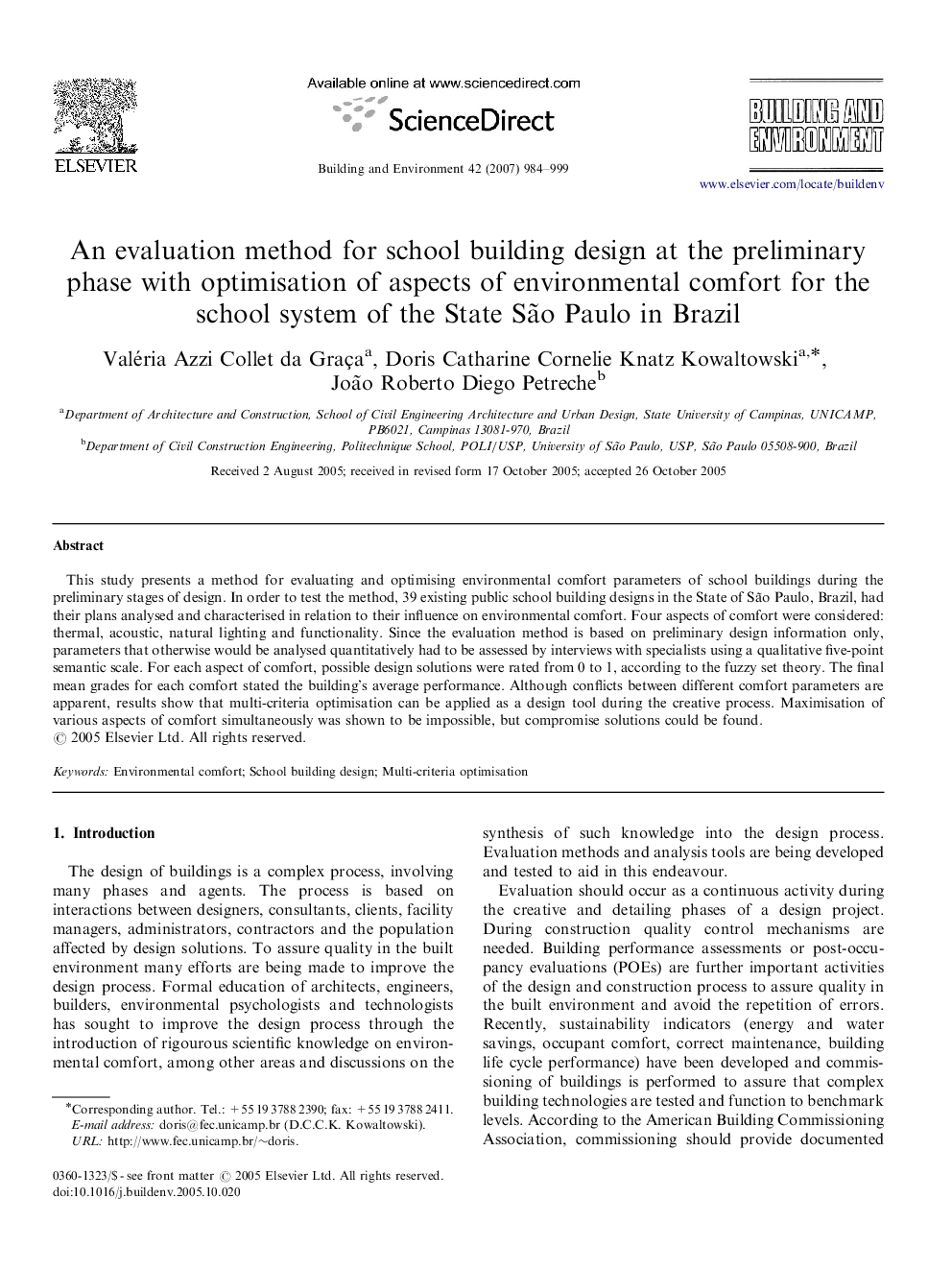| Article ID | Journal | Published Year | Pages | File Type |
|---|---|---|---|---|
| 250262 | Building and Environment | 2007 | 16 Pages |
This study presents a method for evaluating and optimising environmental comfort parameters of school buildings during the preliminary stages of design. In order to test the method, 39 existing public school building designs in the State of São Paulo, Brazil, had their plans analysed and characterised in relation to their influence on environmental comfort. Four aspects of comfort were considered: thermal, acoustic, natural lighting and functionality. Since the evaluation method is based on preliminary design information only, parameters that otherwise would be analysed quantitatively had to be assessed by interviews with specialists using a qualitative five-point semantic scale. For each aspect of comfort, possible design solutions were rated from 0 to 1, according to the fuzzy set theory. The final mean grades for each comfort stated the building's average performance. Although conflicts between different comfort parameters are apparent, results show that multi-criteria optimisation can be applied as a design tool during the creative process. Maximisation of various aspects of comfort simultaneously was shown to be impossible, but compromise solutions could be found.
